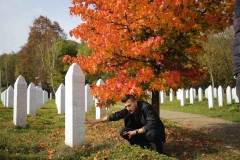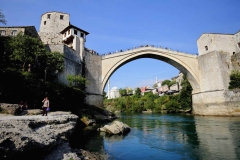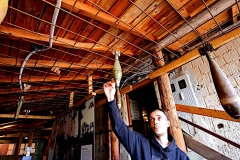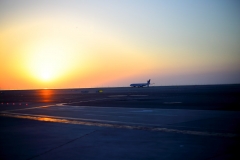The Balkans
My Balkan trip was from 14 Oct to 14 Nov 2018. Countries covered were Bosnia-Hercegovina (Sarajevo, Mostar, Srebrenica), Croatia (Dubrovnik), Montenegro (Kotor), Albania (Tirana), Kosovo (Pristina), Montenegro (Skopje), Bulgaria (Sofia), Greece (Tessaloniki), and Turkey (Istanbul). Took a flight from Kuala Lumpur via Doha to Sarajevo and back to KL from Ataturk Airport. Within the Balkans travel was by bus.. The Balkans was under the Ottoman Turk empire from 14th to early 20th century although some earlier or later than others, e.g., Bosnia-Hercegovina 1463 to 1878 when it was captured by the Austro-Hungarian empire. One question on my mind was why some countries converted to or retained Islam more than others when they became independent.
One thing that I learned was that the Ottoman’s rule was quite benign [Encyclopedia Britannica]. They did not force Islam on the population. Thus the Orthodox (Serbia, Montenegro, Macedonia, Bulgaria, Greece) and Roman Catholic (Croatia, Slovenia) largely remained as such. It was advantageous to the sultans because non-Muslims had to pay a tax. Bosnia-Hercegovina became Muslim because the aristocracy (also in Albania) and the Bogomil Christians who were persecuted by the Catholics and Orthodox for heresy converted. Albania (and Kosovo) who were Illyrians rather than Slavs of the other countries (apart from Greece) too converted – partly to distinguish themselves from the Slavs? Even when the Ottomans were defeated and driven back the situation remains.
(Press F11 for biggest photo size)
 Sarajevo-Srebrenica
Sarajevo-Srebrenica
Srebrenica was a Muslim town, an enclave in the North-east surrounded by Orthodox Serbs. Since Ottoman days Muslims tend to be in towns with Christians in rural areas. The genocide, as described by the International Criminal Tribunal for former Yugoslavia, occurred in July 1995, well into the Bosnian war. The town was a United Nations protectorate under the Dutch army control. They were blamed for not protecting the Muslims who seek protection within the UN compound when the Serbs move in and rounded them and took them away to be massacred. 8732 were killed, the worst atrocity in Europe after WW2
 Sarajevo-Mostar
Sarajevo-Mostar
While Slovenes, Bulgarians and Macedonians speak their own Slavic languages Bosniaks, Serbs, Croats, Montenegrans speak dialects of the Serbo-Croat language. Thus, it is religion that separates them. In the case of Croatia, Serbia had another reason to have war with them. During World War 2, Croatia sided with the Nazis, while Serbia the opposite side. Croatia's Ustazes severely persecuted not just Jews but also Serbs... These people are South Slavs that moved from northern Slav areas of Russia, Poland Ukraine etc in the 6th Century. Previously they form Yugoslavia (Yugo means South)
 Sarajevo War Tour
Sarajevo War Tour
In 1989 Slobodan Milosevic a hardline Serbian nationalist was elected president of Serbia and Yugoslavia. In 1991 Slovenia and Croatia declared independence and soon Bosnia-Hercegovina. He declared war on these states. The war with B-H lasted till 1995, the worst of the three wars. This is because of the hatred that the Serbs had for the Ottomans who defeated them 1389 at the Battle of Kosovo and were subjects till the Turks defeat in World War 1. This hatred transfers to the Muslim Bosniaks. Also Serbs within B-H wanted to be united with Serbia, many living in the Republika Srpska state. Sarajevo is 70% Muslim with B-H as a whole at 50%.
 Sarajevo
Sarajevo
Arrive Sarajevo 14 Oct., a sunny day. Most of my 6 days here are sunny and rainy days are short and not heavy. Generally my trip to the Balkans 14 Oct - 14 Nov has been good weather-wise, mostly sunny and warm >20C. Start feeling chilly only in Sofia, Bulgaria. To me these autumn days are best for traveling especially for the wonderful autumn landscapes. Together with its mountainous landscapes (Balkan means mountain in Turkish) these made for wonderful photography. I love Sarajevo especially the old town Barcarsija area with its Ottoman flavour. The food adds to the highlight of the day after a long day of photography